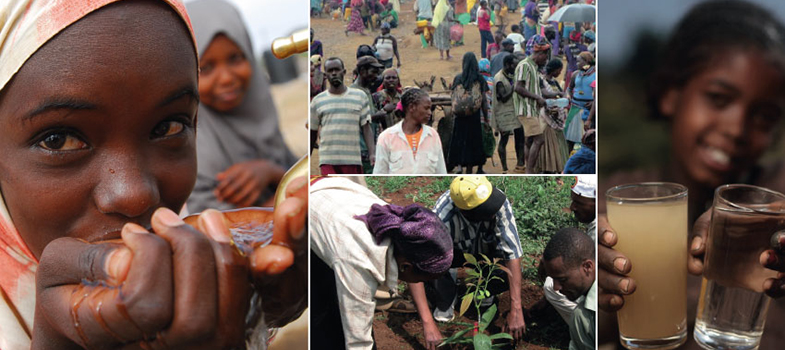5.1.2 Urbanisation in Ethiopia
Ethiopia is one of the least urbanised countries in the world today, and only 18% of its population lives in urban areas (JMP, 2014). In common with many other developing countries, however, this pattern is changing (Figure 5.4). Ethiopia’s urban growth rate is more than 4.0% per year, which places it among the highest in Africa and the world (MWUD, 2007).

The rapid increase in urban populations has meant that peri-urban areas are growing much more quickly than formal urban centres. Peri-urban areas are those areas immediately around a town or city. They are areas in transition from countryside to city (rural to urban), often with undeveloped infrastructure, where health and sanitation services are under pressure and where the natural environment is at risk of degradation.
Defining the boundaries of urban, peri-urban and rural areas is not straightforward. They do not neatly separate themselves by lines on a map. On the contrary, the sprawling nature of urban development means that the areas merge into each other. The lack of a clear boundary can make it difficult to assess the size of towns by their population or geographical area. However, judgements have to be made and, for planning and administrative purposes, data on population size are collected. Table 5.1 shows the number of towns and cities in Ethiopia by population in 2007, the most recently published data.
| Population of urban settlement | Number |
| Up to 2,000 | 171 |
| 2,000 to 4,999 | 339 |
| 5,000 to 19,999 | 310 |
| 20,000 to 49,999 | 79 |
| 50,000 to 99,999 | 14 |
| 100,000 to 200,000 | 8 |
| Above 200,000 | 4 |
| Total | 925 |
Of the four cities with a population of more than 200,000, by far the largest is Addis Ababa. In 2007, the population of Addis Ababa was more than 3 million, which amounted to about 25% of Ethiopia’s urban population (MWUD, 2007). The next-largest city, Dire Dawa, had only 293,000 occupants at that time. The impacts of urbanisation are generally much more evident in the capital than in other towns and cities.
5.1.1 Global trends in urbanisation
